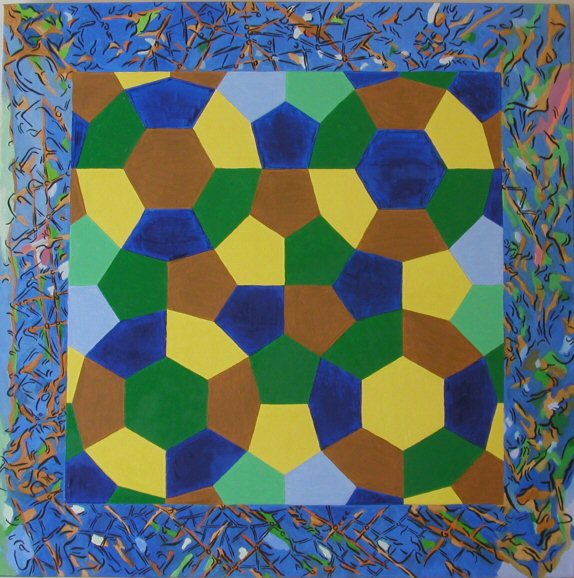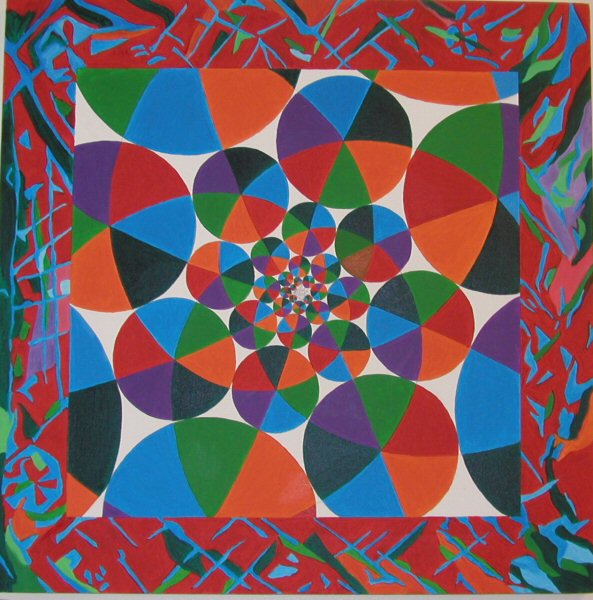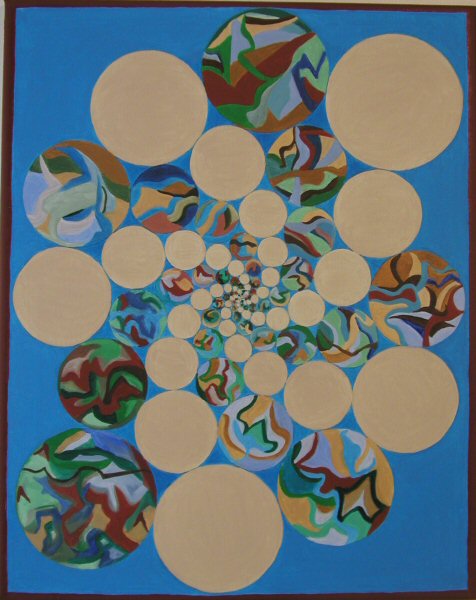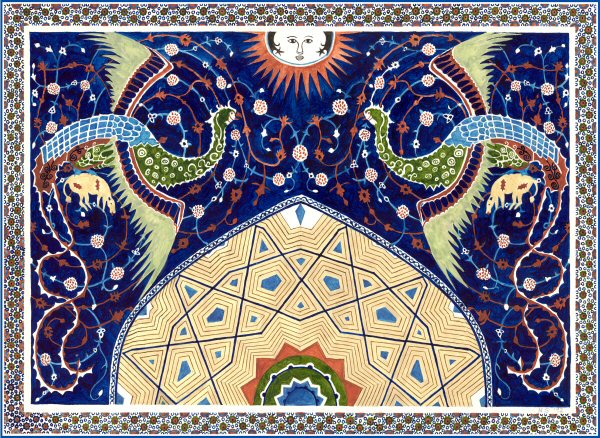Nicola Sutcliffe
Freelance artist
nsutcliffe@ntlworld.com
"I studied art in the UK with Tony Longson and Terry Pope. My student works were geometric constructions using wood and perspex. Most of my work is now painting, mainly in oils. My work is varied: some of my paintings are entirely abstract and some are figurative. Some are hard-edged and the subject matter is obvious. Other paintings are more mysterious, with blurred images, and are open to subjective interpretation. The paintings submitted here show my interest in the juxtaposition of geometric elements and freely improvised elements."
“Pentagons and Hexagons”
2007, Oil on canvas, 2 ft x 2 ft
The central feature is a simple tessellation of pentagons and hexagons. It is painted mainly using four colours and organised so that no touching polygons have the same colour. Spot the mistake. The border is based on a photograph of the giant model built at the 2007 Bridges Conference in Donostia, which has had a software filter applied to it. Some of the individual elements in the model show up as brush strokes.
“ Spirals ”
2008, Oil on canvas, 2 ft x 2 ft

The central part of the picture shows the Doyle spiral cicle packing P = 2 Q = 12. Three spirals pass through each circle, dividing it into six segments, each of which is a different colour, organised so that no touching segments have the same colour. The border is based on a photograph of the giant model built at the 2007 Bridges Conference in Donostia, which has had a software filter applied to it. Some of the individual elements in the model show up as brush strokes.
“ Ten Spiral Arms ”
2008, Oil on canvas, 16" x 20"

This painting shows the Doyle spiral cicle packing P = 2 Q = 12. It is a view of ten spiral arms with alternating plain and coloured circles. The coloured circles are filled with spontaneous designs.
“Bowl of Night ”
1992, Print from my original watercolour on paper, 30" x 22"

This painting is worked from photographs of geometric and figurative designs on the tiling of islamic religious buildings photographed on a visit to Bokhara in Uzbekistan. The title comes from a line in Fitzgerald's translation of the Rubaiyat of Omar Khayyam. Khayyam was a Persian astonomer, mathematician and poet, who lived in Uzbekistan for part of his life. The painting was later used as a design for a 3 metre x 4 metre thick pile woolen rug. Such Chinese syle rugs have a relatively large knot size. The jagged edges that this leads to, particularly on diagonal lines, are removed by cutting small grooves in the surface of the rug: an ancient form of anti-aliasing. No such cutting was done in the border pattern where the individual knots can be seen.